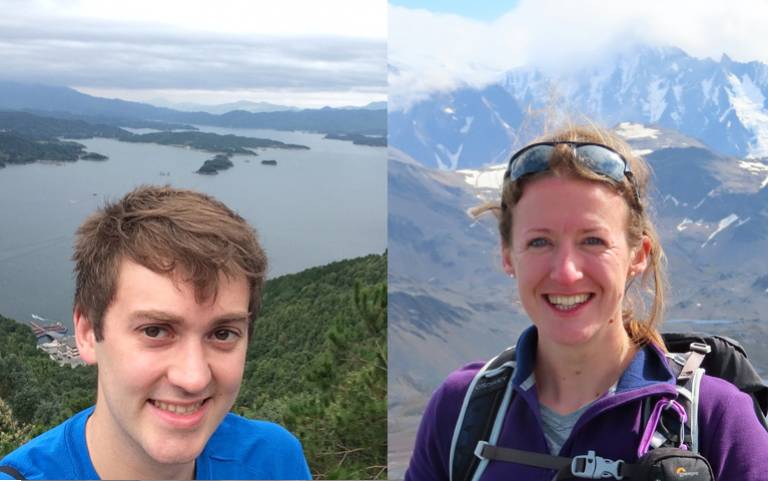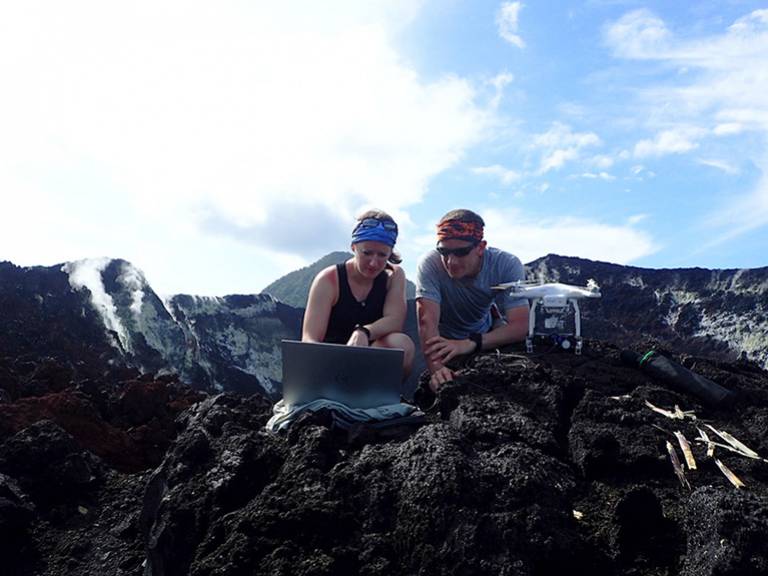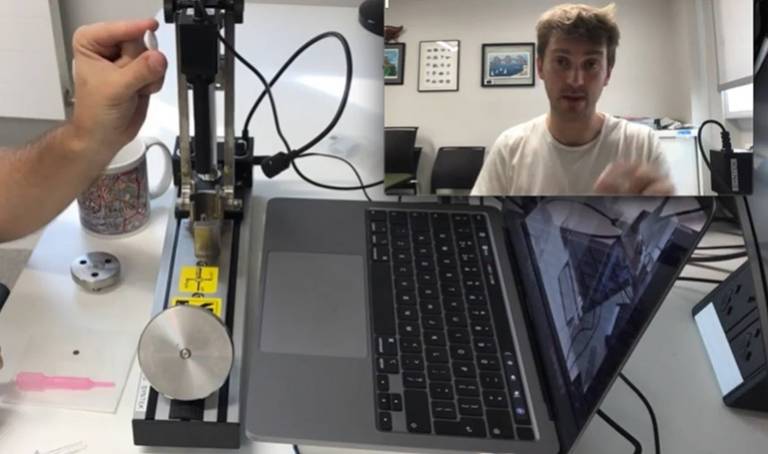Geological Society Awards 2021
2 March 2021
Drs Emma Liu and Andy Thomson are being honoured for their contributions to the geosciences and the geoscience profession.

Dr Emma Liu received the Wollaston Fund, an annual award given by The Geological Society of London to an early career researcher “on the basis of noteworthy published research in either or both 'pure' and 'applied' aspects of geoscience". The award is named in honour of William Hyde Wollaston (1766-1828) and has been bestowed annually since 1873.

“Emma's research explores the processes taking place deep beneath volcanoes, which govern the nature and footprint of the hazards they pose to communities and the environment.
In particular, she focuses on understanding the role of volatiles, such as carbon dioxide and sulfur dioxide, in promoting volcanic activity and driving magma fragmentation during explosive eruptions. Analysing the textural and chemical properties of volcanic ash producing during explosive eruptions - many samples collected through citizen science programmes - Emma reconstructs the physical and chemical conditions under which magma ascends and fragments, releasing volatile gases and ash into the atmosphere. Key to her research is the development of instrumented Unoccupied Aerial Systems ("drones") to measure in-situ the chemistry of gases being emitted from highly active yet inaccessible volcanoes, contributing to both monitoring strategies and our growing understanding of long-term volatile recycling at arc volcanoes.
Dr Andrew Thomson received the Murchison Fund, an annual award given by The Geological Society of London to an early career researcher “on the basis of noteworthy published research in ‘hard’ rock studies”. The award was established under the will of Sir Roderick Impey Murchison (1792-1871) and has been bestowed annually since 1873.

“Andrew’s research investigates physical and chemical processes that occur throughout the interior of Earth and other planets, and which shape their long-term evolution and habitability.
His work has included several studies that focussed on the deep recycling of carbon, synthesising observations from diamond-hosted mineral inclusions with experimental insights to track the pathway of carbon from Earth’s surface to depths of 400-600 km beneath the surface. Additionally, he performs a range of experiments that aim to measure geophysical properties of materials present deep inside the Earth. These experimental measurements can be used to interpret seismological data, providing insight into the geodynamic processes occurring far beneath the surface and which drive the behaviour and evolution of our planet on geological timescales.
 Close
Close

